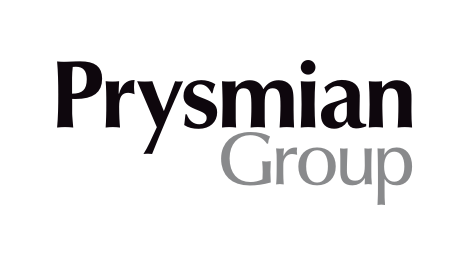Prysmian – Prysmian presents its strategy to lead the Energy Transition and Digital Transformation
Key highlights:
- Prysmian Group will today unveil details of its strategy and outline 2027 financial and non-financial ambitions at its Capital Markets Day (CMD)
- The strategy – “Connect, to lead” – is aimed at capitalizing on the Group’s market position to seize the opportunities presented by current market trends
- Business to reshape into four segments to structurally align with market dynamics: Renewable Transmission, Power Grid, Electrification and Digital Solutions
- Financial targets set for 2027:
- EBITDA of €2bn(+/-€100m), up from €1.49bn in 2022 o Free cash flow to €900m-1bn, up from €559m in 2022
- Capex to €2.7bn over the period 2023-2027 on selective capacity expansion
- ROCE to 25-28%, up from 20.1% in 2022
- Sustainability targets upgraded for 2027
Prysmian Group (“the Group”) will today present its strategy including the reshaping of its business into four new segments and outline financial and non-financial targets for 2027.
The strategy will see Prysmian capitalise on its leading positions and outline plans to win in new growth markets in order to become a global cabling solution provider leading the Energy Transition and Digital Transformation.
Details of the strategic plan will be announced during Prysmian Group’s Capital Markets Day (CMD), which will be held today in Naples.
Four pillars of the new strategy
The cable industry is increasingly strategic due to long-term market trends which require resilient, high-performing, sustainable and innovative cable solutions: increased renewable generation, growing electricity demand, enhanced power grids, massive data growth.
Against this backdrop and building on our previous success which was based on market consolidation, the strategy focuses on organic growth arising from the market trends and comprises four pillars:
- Self-funded capacity expansion: investments to support organic growth through consistent cash flow generation
- Balanced and innovative portfolio: balanced portfolio and continued innovation to support technological leadership and sustainability
- People empowerment: best people to grow business know-how and capabilities
- Business segmentation: new segmentation to seize market trends and opportunities
New business segmentation capitalizing on market trends
In light of the opportunities created by the market trends, Prysmian will reshape its business into four new segments from the existing three:
- Renewable Transmission, including the Submarine Power and the Land HVDC business units, currently belonging to the Projects segment ;
- Power Grid, including HVAC business unit, also previously in Projects, and Power Distribution and Overhead Lines, currently in the Energy segment ;
- Electrification, including Industrial & Construction (former Trade & Installer) and Specialties (formerly in Industrial & NWC), currently in the Energy segment;
- Digital Solutions, the current Telecom segment, including the following business units: Fiber and Optical Cables, Connectivity, Multimedia & Inside Plant cables (MMS) .
Financial targets
The Group expects to increase adj. EBITDA from €1.49bn in 2022 to ~€2bn by 2027, with a target range of +/- €100m. The strategy anticipates the selective acceleration of investments to meet growing demand, in particular in the segments of Renewable Transmission and Power Grid: over the period 2023-2027, capital expenditure will grow by 1.7x compared to the previous five years, to €2.7bn. Free Cash Flow is expected to grow to €900m- €1bn in 2027 from €559m in 2022. ROCE is expected to increase to 25-28% in 2027, confirming the high returns of the planned strategic investments.

Non-financial targets
For Prysmian, sustainability is a key driver to create value. This means the Group has a long-term vision and a clearly defined strategy underpinned by measurable climate ambitions for 2030 and has set intermediate KPIs for 2025 and 2027.
Today Prysmian confirms its Scope 3 Net Zero target for 2050. The Group intends to continue to lead innovation in the cable industry developing thinner, lighter, faster, and greener products while creating tangible value for customers and in the communities and territories in which it operates.
The table below contains a selection of the Group’s key targets.

As part of the Group commitment to develop the talent in underprivileged communities, more than 1,400 children and 400 women and girls will be supported by social programs between 2023 and 2027, including:
- Oman: 100 women and 800 children through “SHE STEM” and STEM education
- Netherlands: 625 children involved in STEM education and labs
- Latin America: 315 women and girls involved in our social programs
Valerio Battista, Chief Executive Officer (CEO), commented: “I am incredibly proud of the business we have built together over the past 15 years, an organization that has delivered value and that has retained its cohesive culture as we have expanded into new markets through transformational M&A. The outcome of our strategic choices is a strong business that is leading the industry, and that has the technology and resources to take advantage of the exciting opportunities ahead. As we enter this next chapter, I pass the baton to Massimo Battaini, who is the right leader to drive our Company and the industry forward.”
Massimo Battaini, CEO-designate, stated: “Prysmian is uniquely placed to benefit from the opportunities presented by the structural changes arising from the convergence of the energy transition and digital transformation. Our market leading position, track record of technological leadership and innovation, loyal customer base and unrivalled team are the foundation from which we can capitalise on these trends. Combined with our geographical footprint and breadth of products, we are well-placed to grow our markets and become a global cable solution provider”.
“We have set ambitious financial and sustainability targets for the next five years, which I am confident we will achieve through our strategy, which is based on organic growth. This will see us reshape our business to structurally align with the market dynamics, selectively expand capacity through self-funded investment and deploy increasingly cutting-edge and sustainable technologies, while continuing to empower our people. We believe these are the key drivers to unlock the potential of our business and create value for all our stakeholders”.
“I want to thank Valerio Battista, and look forward to leading this company in the new exciting phase”.
SourcePrysmian Group
EMR Analysis
More information on Prysmian: See the full profile on EMR Executive Services
More information on Valerio Battista (Group Chief Executive Officer, Prysmian Group until the 2024 Annual General Meeting (April)): See the full profile on EMR Executive Services
More information on Massimo Battaini (Group Chief Operating Officer and Executive Director, Prysmian Group + Proposed Candidate as CEO at the 2024 Annual General Meeting (April)): See the full profile on EMR Executive Services
More information on Pier Francesco Facchini (Group Chief Financial Officer, Prysmian Group): See the full profile on EMR Executive Services
More information on the Prysmian Sustainability Strategy: See the full profile on EMR Executive Services
More information on Maria Cristina Bifulco (Group Chief Sustainability Officer & Group Investor Relations Director, Prysmian Group): See the full profile on EMR Executive Services
EMR Additional Notes:
- Grid, Microgrids and DERs:
- The power grid is a network for delivering electricity to consumers. The power grid includes generator stations, transmission lines and towers, and individual consumer distribution lines.
- The grid constantly balances the supply and demand for the energy that powers everything from industry to household appliances.
- Electric grids perform three major functions: power generation, transmission, and distribution.
- A microgrid is a small-scale power grid that can operate independently or collaboratively with other small power grids. The practice of using microgrids is known as distributed, dispersed, decentralized, district or embedded energy production.
- Smart Grid is any electrical grid + IT at all levels . Micro Grid is a group of interconnected loads and DERs (Distributed energy resources) within a clearly defined electrical and geographical boundaries witch acts as a single controllable entity with respect to the main grid.
- Distributed energy resources (DERs) are small-scale electricity supply (typically in the range of 3 kW to 50 MW) or demand resources that are interconnected to the electric grid. They are power generation resources and are usually located close to load centers, and can be used individually or in aggregate to provide value to the grid.
- Common examples of DERs include rooftop solar PV units, natural gas turbines, microturbines, wind turbines, biomass generators, fuel cells, tri-generation units, battery storage, electric vehicles (EV) and EV chargers, and demand response applications.
- Distributed energy resources management systems (DERMS) are platforms which helps mostly distribution system operators (DSO) manage their grids that are mainly based on distributed energy resources (DER).
- DERMS are used by utilities and other energy companies to aggregate a large energy load for participation in the demand response market. DERMS can be defined in many ways, depending on the use case and underlying energy asset.
- HVDC Light:
- HVDC Light is the successful and environmentally-friendly way to design a power transmission system for a submarine cable, an underground cable, using over head lines or as a back-to-back transmission. HVDC Light is HVDC technology based on voltage source converters (VSCs).
- HVDC Light is designed to transmit power underground and underwater, also over long distances. It offers numerous environmental benefits, including “invisible” power lines, neutral electromagnetic fields, oil-free cables and compact converter stations.
- As its name implies, HVDC Light is a dc transmission technology. However, it is different from the classic HVDC technology used in a large number of transmission schemes. Classic HVDC technology is mostly used for large point-to-point transmissions, often over vast distances across land or under water. It requires fast communications channels between the two stations, and there must be large rotating units – generators or synchronous condensers – present in the AC networks at both ends of the transmission. HVDC Light consists of only two elements: a converter station and a pair of ground cables. The converters are voltage source converters, VSC’s. The output from the VSC’s is determined by the control system, which does not require any communications links between the different converter stations. Also, they don’t need to rely on the AC network’s ability to keep the voltage and frequency stable. These feature make it possible to connect the converters to the points bests suited for the AC system as a whole.
- HVDC (High-Voltage Direct Current):
- Key enabler for a carbon-neutral energy system. It is highly efficient for transmitting large amounts of electricity over long distances, integration of renewables and interconnecting grids, opening up for new sustainable transmission solutions.
- HVDC Links:
- The first successful HVDC experimental long distance line (37 miles) was made at Munich, Germany in 1882 by Oskar Von Miller and fellow engineers.
- HVDC allows power transmission between AC transmission systems that are not synchronized. Since the power flow through an HVDC link can be controlled independently of the phase angle between source and load, it can stabilize a network against disturbances due to rapid changes in power.
- An HVDC line has considerably lower losses compared to HVAC over longer distances.

- Neu Connect (the first power interconnection between Great Britain and Germany): https://neuconnect-interconnector.com +
- The NeuConnect Interconnector will create the first direct power link between Germany and Great Britain, connecting two of Europe’s largest energy markets for the first time. Around 720km of land and subsea cables will form an ‘invisible highway’ allowing up to 1.4GW of electricity to move in either direction, enough to power up to 1.5 million homes over the life of the project.
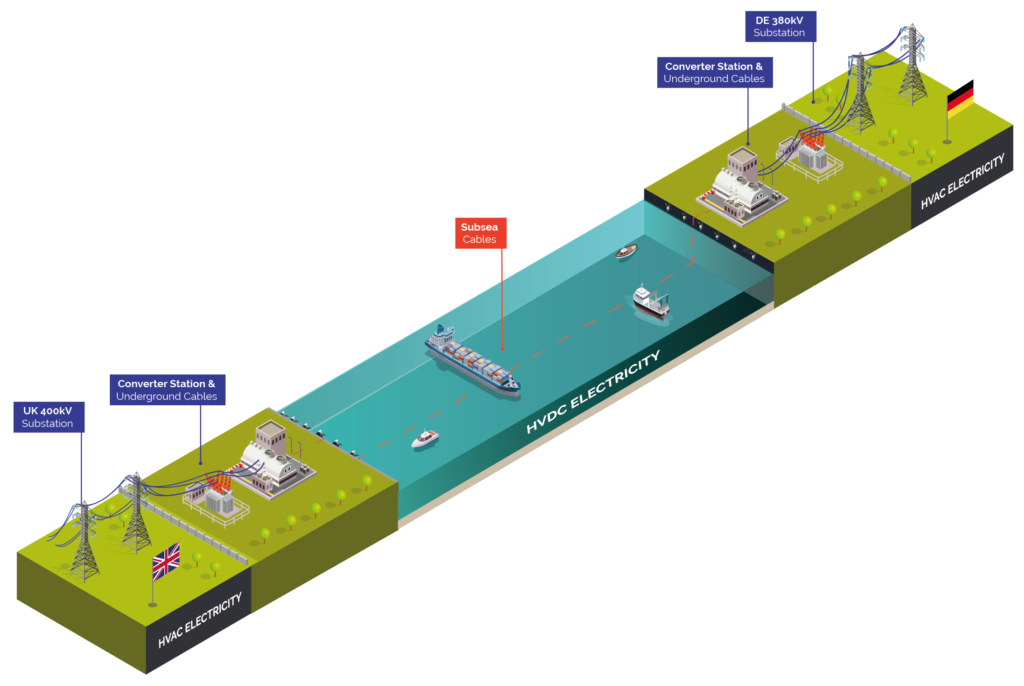
- The Tyrrhenian Link: https://www.terna.it/en/projects/public-engagement/Tyrrhenian-link +
- Connecting Sicily with Sardinia and the Italian peninsula via a double underwater cable: a new electricity corridor at the centre of the Mediterranean; the Tyrrhenian Link. At 950 kilometres long and with a capacity of 1000 MW, this is an infrastructure initiative of international significance, another step towards a more sustainable energy future. The link will improve electricity exchange capacity, facilitate the development of renewable energy sources, and the reliability of the grid.
- The overall project involves two sections: EAST from Sicily to Campania and WEST from Sicily to Sardinia.
- The East section is 480 kilometres long and connects the Fiumetorto landing point, in the municipality of Termini Imerese in Sicily, with the landing point in Torre Tuscia Magazzeno, near Battipaglia in Campania.
- The WEST section is approximately 470 kilometres long and connects the Fiumetorto landing point to the one in Terra Mala, in Sardinia.

- The Viking Link: https://viking-link.com +
- World’s longest power interconnection. the Viking Link is a 1400 MW high voltage direct current (DC) electricity link between the British and Danish transmission systems connecting at Bicker Fen substation in Lincolnshire and Revising substation in southern Jutland, Denmark.

- The North Sea Link: https://northsealink.com/ + North Sea Link is a 720 kilometre subsea interconnector linking the electricity systems of the UK and Norway. The 1400 megawatt interconnector stretches from Blyth in the UK, across the North Sea, to Kvilldal in Norway.
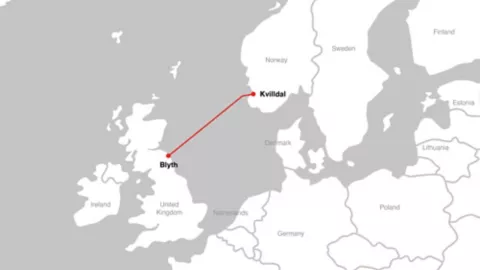
- The Hertel–New York interconnection line: https://www.hydroquebec.com/projects/hertel-new-york-interconnection/ + The Hertel–New York interconnection line project aims to supply clean, renewable energy to New York City. In Québec, the project involves the construction of a line that will span 57.7 km (56.1 km underground and 1.6 km underwater). This 400-kV direct current line will connect Hertel substation in La Prairie to an interconnection point in the Rivière Richelieu at the Canada–United States border.

- The Biscay Gulf Project: https://www.inelfe.eu/en/projects/bay-biscay + The electricity interconnection between Gatika (Spain) and Cubnezais (France) will be the first fundamentally submarine interconnection between Spain and France. This project will increase the exchange capacity from 2,800 to 5,000 MW, improving the safety, stability and quality of electricity supply between the two countries and also with the rest of Europe.
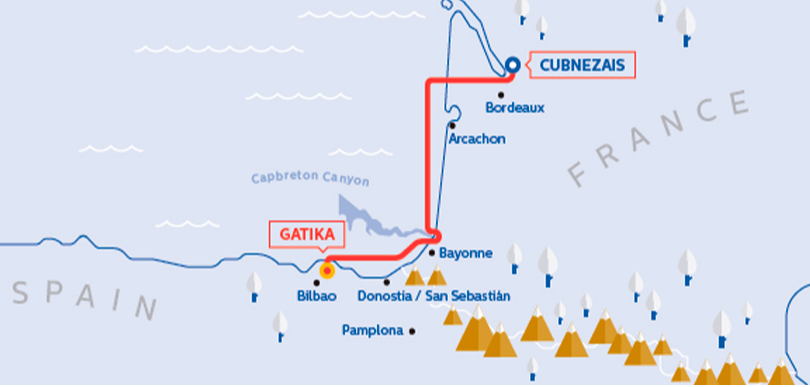
- The Eastern Green Link 2 (EGL2): https://www.ssen-transmission.co.uk/projects/project-map/eastern-green-link-2/ + The Eastern Green Link 2 project is a proposal to install a sub-sea high-voltage direct current (HVDC) cable from Sandford Bay, at Peterhead, to Drax in England. There is currently a large amount of forecasted generation that will require connection to the electricity network in the coming years and as such we are proposing several upgrades to the transmission network across the north of Scotland to facilitate this. The Eastern HVDC Link will play a key role in helping achieve our Net-Zero targets.

- The EuroAsia Interconnector: https://euroasia-interconnector.com/ + EuroAsia Interconnector Limited is the official EU project developer of the 2,000MW electricity interconnector between Israel, Cyprus, Greece and Europe. The EuroAsia Interconnector is a leading European Project of Common Interest (PCI) labelled as an EU “electricity highway” connecting the national electricity grids of Israel, Cyprus and Greece through a 1,208 km subsea HVDC cable.
- The EuroAsia Interconnector comprises the electricity interconnection between the grids of Israel, Cyprus, Greece through a subsea DC cable and with HVDC onshore converter stations at each connection point, with a total capacity of 2000MW. The project is an energy highway bridging Asia and Europe, with a total length of 1,208 km. It creates a reliable alternative route for the transfer of electric energy to and from Europe.

- AC (Alternating Current) & DC (Direct Current) & UC (Universal Current):
- Direct current (DC) is an electric current that is uni-directional, so the flow of charge is always in the same direction. As opposed to alternating current, the direction and amperage of direct currents do not change. It is used in many household electronics and in all devices that use batteries.
- Direct current has many uses, from the charging of batteries to large power supplies for electronic systems, motors, and more. Very large quantities of electrical energy provided via direct-current are used in smelting of aluminum and other electrochemical processes.
- in contrast to AC power, DC power is entirely made up of active power, meaning that there are almost no losses due to the capacitance of wires when DC power travels long distances. In fact, high voltage AC transmission systems have losses of 7% to 15% with aboveground transmission.
- Alternating Current is used in homes as Direct current can not be easily stepped up or stepped down with the help of transformers whereas alternating current can easily be converted from low voltage to high voltage or vice-versa with the help of transformers.
- “UC” is used for “Universal Current”, that translates to “either DC or AC”. So a 24 V UC input can accept either 24 V AC or 24 V DC.
- Low-Voltage (LV):
- The International Electrotechnical Commission (IEC) defines supply system low voltage as voltage in the range 50–1000 V AC or 120–1500 V DC.
- Medium-Voltage (MV):
- Medium-voltage circuit breakers rated between 1 and 35/72 kV.
- High-Voltage (HV):
- The International Electrotechnical Commission define high voltage as above 1000 V for alternating current, and at least 1500 V for direct current.
- Super High-Voltage:
- Is >300kV.
- Ultra High-Voltage:
- Is >1.000kV.
- 4 Types of Network Cabling:
- Coaxial Cable:
- Coaxial cables have a single copper conductor at the center, while a plastic layer provides insulation between the center conductor and braided metal shield. The metal shield blocks outside interference from fluorescent lights, motors, and other computers.
- Fiber Optic Cable:
- Fiber optic cables possess a center glass core surrounded by multiple layers of protective materials. They avoid electrical obstruction by transmitting light instead of electronic signals, making them perfect for environments with large amounts of electrical interference. Fiber optic cables have become the standard for connecting networks across buildings because of their resistance to moisture and lighting.
- Shielded Twisted Pair (STP) Cable:
- Often referred to colloquially as simply ethernet cables, STP cables employ a special type of copper telephone wiring used for business installations. An external shield functioning as a ground is added to the standard twisted pair of telephone wires.
- Unshielded Twisted Pair (UTP) Cable:
- Unshielded twisted pair (UTP) cables are broadly used in the telecommunications and computer industries as ethernet cables and telephone wires. In a UTP cable, conductors forming a single circuit are twisted around one another to cancel out electromagnetic interference (EMI) from external sources.
- Coaxial Cable:
- FTTx:
- Fiber to the Home (FTTH), Fiber to the Building (FTTB), Fiber to the Premises (FTTP) and Fiber to the Curb (FTTC), termed as FTTx are various technology and deployment options developed to enable reach of fiber as close to the user location as possible to provide high speed data and voice services.
- Fiber to the home (FTTH) is the delivery of a communications signal over optical fiber from the operator’s switching equipment all the way to a home or business, thereby replacing existing copper infrastructure such as telephone wires and coaxial cable.
- FTTP and FTTH are two different abbreviations for the same thing. FTTP stands for ‘fibre to the premises’ and FTTH stands for ‘fibre to the home’. … Unlike FTTC, FTTP broadband is delivered via fibre-optic cables not only as far as the cabinet, but across the entire span to your home or business.
- Fiber-optic cables are less susceptible to glitches than traditional copper wires and can withstand the shock and vibration from inclement weather. FTTH is considered “future proof” and offers the flexibility to deliver additional services in the years to come.

- Key Differences Between Copper Cable and Fiber Optics:
- Data transmission speed of a fiber cable is comparatively more than that of copper cable. Copper cables are nearly 31% slower in data transmission than fiber cable.
- A copper cable transmits the data through it in the form of electrical pulse i.e., due to the movement of electrons. As against in a fiber optics, the data transmission is the result of movement of photons thus it transmits in the form of light pulses.
- The bandwidth provided by a copper cable is less than that of the fiber optics. Thus, a copper cabling meets the industry standards and provides a performance of up to 10 Gbps. However, a fiber optics due to its large bandwidth possess better performance of up to 60 Tbps and above.
- The energy consumed by a copper cable during its operation is somewhat greater than 10W but on the other side, fiber optics consumes less energy i.e., around 2W per user.
- The lifespan of a copper wire is approximately 5 years as it gets easily affected by temperature variations and other environmental factors. However, fiber optics possess a lifespan of 30 to 50 years.
- As fiber optics are difficult to be tapped as compared to copper cables thus proves advantageous from the security point of view. Due to this reason fiber optics are widely used for data transmission at present time.
- A fiber optics allows transmission of data at a much faster rate as compared to copper cable.
- The installation and maintenance cost of a fiber cable is more than copper cable.
- Carbon Dioxide (CO2):
- Primary greenhouse gas emitted through human activities. Carbon dioxide enters the atmosphere through burning fossil fuels (coal, natural gas, and oil), solid waste, trees and other biological materials, and also as a result of certain chemical reactions (e.g., manufacture of cement). Carbon dioxide is removed from the atmosphere (or “sequestered”) when it is absorbed by plants as part of the biological carbon cycle.
- Decarbonization:
- Reduction of carbon dioxide emissions through the use of low carbon power sources, achieving a lower output of greenhouse gasses into the atmosphere.
- Global Warming: Global warming is the long-term heating of Earth’s climate system observed since the pre-industrial period (between 1850 and 1900) due to human activities, primarily fossil fuel burning, which increases heat-trapping greenhouse gas levels in Earth’s atmosphere.
- Global Warming potential (GWP):
- The heat absorbed by any greenhouse gas in the atmosphere, as a multiple of the heat that would be absorbed by the same mass of carbon dioxide(CO2). GWP is 1 for CO2. For other gases it depends on the gas and the time frame.
- Carbon dioxide equivalent (CO2e or CO2eq or CO2-e) is calculated from GWP. For any gas, it is the mass of CO2 which would warm the earth as much as the mass of that gas. Thus it provides a common scale for measuring the climate effects of different gases. It is calculated as GWP times mass of the other gas. For example, if a gas has GWP of 100, two tonnes of the gas have CO2e of 200 tonnes.
- GWP was developed to allow comparisons of the global warming impacts of different gases.
- Greenhouse Gas (GHG):
- A greenhouse gas is any gaseous compound in the atmosphere that is capable of absorbing infrared radiation, thereby trapping and holding heat in the atmosphere. By increasing the heat in the atmosphere, greenhouse gases are responsible for the greenhouse effect, which ultimately leads to global warming.
- The main gases responsible for the greenhouse effect include carbon dioxide, methane, nitrous oxide, and water vapor (which all occur naturally), and fluorinated gases (which are synthetic).

- Hydrofluorocarbons (HFC):
- Hydrofluorocarbons (HFCs) are a group of industrial chemicals primarily used for cooling and refrigeration. HFCs were developed to replace stratospheric ozone-depleting substances that are currently being phased out under the Montreal Protocol on Substances that Deplete the Ozone Layer.
- Many HFCs are very powerful greenhouse gases and a substantial number are short-lived climate pollutants with a lifetime of between 15 and 29 years in the atmosphere.
- GHG Protocol Corporate Standard Scope 1, 2 and 3: https://ghgprotocol.org/ + The GHG Protocol Corporate Accounting and Reporting Standard provides requirements and guidance for companies and other organizations preparing a corporate-level GHG emissions inventory. Scope 1 and 2 are mandatory to report, whereas scope 3 is voluntary and the hardest to monitor.
- Scope 1: Direct emissions:
- Direct emissions from company-owned and controlled resources. In other words, emissions are released into the atmosphere as a direct result of a set of activities, at a firm level. It is divided into four categories:
- Stationary combustion (e.g fuels, heating sources). All fuels that produce GHG emissions must be included in scope 1.
- Mobile combustion is all vehicles owned or controlled by a firm, burning fuel (e.g. cars, vans, trucks). The increasing use of “electric” vehicles (EVs), means that some of the organisation fleets could fall into Scope 2 emissions.
- Fugitive emissions are leaks from greenhouse gases (e.g. refrigeration, air conditioning units). It is important to note that refrigerant gases are a thousand times more dangerous than CO2 emissions. Companies are encouraged to report these emissions.
- Process emissions are released during industrial processes, and on-site manufacturing (e.g. production of CO2 during cement manufacturing, factory fumes, chemicals).
- Direct emissions from company-owned and controlled resources. In other words, emissions are released into the atmosphere as a direct result of a set of activities, at a firm level. It is divided into four categories:
- Scope 2: Indirect emissions – owned:
- Indirect emissions from the generation of purchased energy, from a utility provider. In other words, all GHG emissions released in the atmosphere, from the consumption of purchased electricity, steam, heat and cooling. For most organisations, electricity will be the unique source of scope 2 emissions. Simply stated, the energy consumed falls into two scopes: Scope 2 covers the electricity consumed by the end-user. Scope 3 covers the energy used by the utilities during transmission and distribution (T&D losses).
- Scope 3: Indirect emissions – not owned:
- Indirect emissions – not included in scope 2 – that occur in the value chain of the reporting company, including both upstream and downstream emissions. In other words, emissions are linked to the company’s operations. According to GHG protocol, scope 3 emissions are separated into 15 categories.
- Scope 1: Direct emissions:
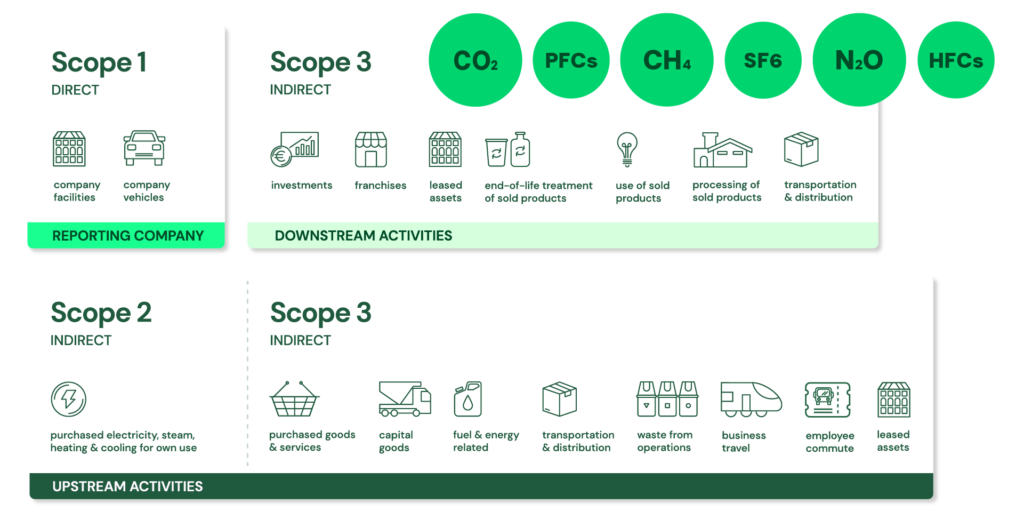
- STEM Education:
- STEM Education, at its core, simply means educating students in four specific disciplines, namely, Science, Technology, Engineering, and Mathematics (collectively shortened as STEM).
- Instead of training students in any one of these domains, STEM combines all four in an interdisciplinary and applied approach, to better equip students to have a career and consider real-world applications.
- Its recent successor, STEAM, also incorporates the arts, which have the ability to expand the limits of STEM education and application.
EMR Additional Financial Notes:
- Major financial KPI’s since 2017 are available on EMR Executive Services under “Financial Results” and comparison with peers under “Market Positioning”
- Companies’ full profile on EMR Executive Services are based on their official press releases, quarterly financial reports, annual reports and other official documents like the Universal Registration Document.
- Prysmian Q2 2023 presentation: https://www.prysmiangroup.com/sites/default/files/prysmian-1h23-presentation-def-v2.pdf
- Prysmian Capital Markets Day 2023: https://www.prysmiangroup.com/sites/default/files/atoms/files/prysmian-capital-markets-day-pres-web-master-final-v2.pdf
- Prysmian FY2022 presentation: https://www.prysmiangroup.com/sites/default/files/prysmian-fy22-presentation-def.pdf
- Prysmian FY 2021 presentation: https://www.prysmiangroup.com/sites/default/files/atoms/files/Prysmian%20FY21_Presentation_def_0.pdf
- Prysmian Sustainability Report 2022: https://www.prysmiangroup.com/sites/default/files/pr-2302-bil-sost-2022-en-compr.pdf
- Prysmian Annual Integrated Report 2022: https://www.prysmiangroup.com/sites/default/files/pr-2302-rsg-2022-integrated-annual-report-compr_0.pdf
- Prysmian Annual Report 2021: https://www.prysmiangroup.com/sites/default/files/pr-2302-rsg-2022-integrated-annual-report-compr_0.pdf

